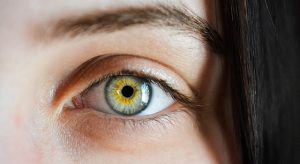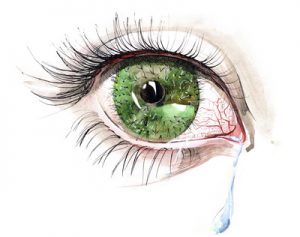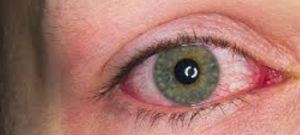Degenerative myopia is estimated to affect 3% of the world’s population.
Myopia, also called nearsightedness, is a condition in which images focus in front of the eye, causing a blurred image on the retina. Nearsightedness worsens when the picture moves further away from the retina, resulting in blurry vision in the distance.
There is a high risk of vision loss in the more severe forms of myopia, such as degenerative myopia.
What causes myopia?
Light rays focus on the front of the retina in myopia. As a result, close items are clearly seen, while distant objects are blurry. However, near vision might worsen to the point that reading close to the face becomes challenging.
A myopic eye might develop in one of three ways:
- The cornea (the front surface of the eye) is excessively curved and therefore too powerful
- The eyeball is too long
- A combination of both
When the growing phase is complete, myopia usually stabilizes, and glasses can restore normal vision. Increased levels of myopia, on the other hand, are often genetic, meaning that if one of the parents is moderately or severely nearsighted, the chances of one of the children being myopic are higher.
Juvenile onset myopia is a type of myopia that starts in childhood and almost always worsens as you get older.
The severe forms of myopia, such as degenerative myopia, increase the risk of vision loss and blindness.
The retina is stressed by the deformation of the eye, and it can become injured or detached, leading to significant deterioration of visual acuity.
What is degenerative myopia?
Degenerative myopia, also known as ‘pathological myopia’ or ‘progressive myopia’, is the type of nearsightedness that creates major vision loss.
This condition can cause significant visual loss and poor eyesight. Degenerative myopia can strike anyone at any age, although it’s most frequent in adults in their 30s and 40s.
The disorder is caused by myopia-related alterations in the shape of the eyes. Myopia is characterized by enlarged eyeballs, which cause the ocular tissues to be stretched thinner than normal. This can put you at a higher risk of macular degeneration and other retinal issues.
Signs and symptoms of degenerative myopia
Common signs and symptoms of degenerative myopia include:
- Loss of central vision
- Difficulty recognizing faces
- Changes in color perception
- A gray spot in the visual field
- Poor contrast sensitivity
- Problems while reading
- Straight lines appear distorted
If you’ve experienced blurry vision, or any of the symptoms mentioned above, contact an eye doctor near you.
SEE RELATED: When is Blurred Vision a Medical Emergency?
Treatment for degenerative myopia
Many times the vision loss from degenerative myopia is permanent.
To help improve vision quality and restore a patient’s eyesight, there are different treatment options your eye doctor will consider:
- Prescription glasses – Thick-lens glasses can help in the restoration of a person’s vision.
- Contact lenses – Some people may be able to wear prescription contacts instead of glasses to improve their eyesight.
- Intraocular lenses (IOLs) – IOLs are artificial lenses that can be used to replace the eyes’ natural lenses. Some patients with degenerative myopia have found this to be beneficial.
- Anti-VEGF therapy – Anti-VEGF therapy involves taking medications that stop new blood vessels from forming in the retina, which can cause macular degeneration.
- Photodynamic therapy (PDT) – PDT is used to treat abnormal blood vessels in the retina that may be causing visual loss.
- Vitrectomy – Vitrectomy is a procedure that removes some or all of the vitreous gel from inside the eye to aid in the repair of retinal tears or detachments.
LEARN MORE: Guide to Eye Conditions
Schedule an appointment with an eye doctor near you to discuss which degenerative myopia treatment is best for you.
Myopia (short-sighted) can result in major visual loss and poor eyesight.
Degenerative myopia can strike anyone at any age, although it’s most frequent in adults in their 30s and 40s and is best treated with early diagnosis.










